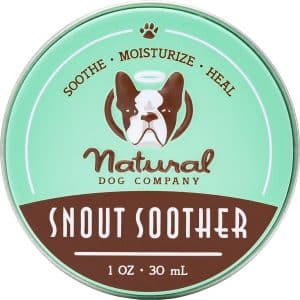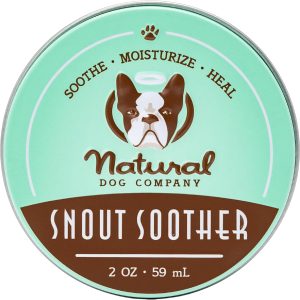Introduction:
Dogs are known for their playful and curious nature, but sometimes their chewing habits can become destructive.
Chewing is a natural behavior for dogs, as it helps them explore the world and relieve stress.
However, when this behavior becomes excessive and starts causing damage to your belongings or poses a danger to your dog’s health, it’s important to take action.
In this guide, we will provide you with valuable tips and strategies to prevent and manage destructive chewing in your beloved furry friend.
By understanding the underlying reasons behind this behavior and implementing effective techniques, you can ensure a harmonious and safe environment for both you and your dog.
Understanding the Root Causes
To effectively prevent and manage destructive chewing in dogs, it’s crucial to understand the root causes behind this behavior. Dogs may chew for various reasons, including teething, boredom, anxiety, or even a lack of proper training. By identifying the underlying cause, you can tailor your approach to address the specific needs of your furry friend.
Teething is a common reason for puppies to engage in destructive chewing. Just like human babies, puppies go through a teething phase where their gums may feel sore and itchy. Chewing helps alleviate the discomfort and allows their adult teeth to emerge. Providing appropriate chew toys and regularly rotating them can help redirect their chewing behavior away from your furniture or shoes.
Boredom is another common trigger for destructive chewing. Dogs are intelligent creatures that need mental and physical stimulation. When they lack proper exercise or mental engagement, they may resort to chewing as a way to alleviate their boredom. Ensuring your dog receives enough exercise, playtime, and interactive toys can help keep them mentally and physically satisfied.
Anxiety and stress can also lead to destructive chewing. Dogs, just like humans, can experience anxiety due to various factors such as separation anxiety, fear, or changes in their environment. Chewing provides a sense of comfort and relief for anxious dogs. In such cases, it’s important to address the underlying anxiety through behavior modification techniques, training, and, if necessary, consulting with a professional dog behaviorist.
Lack of proper training and boundaries can contribute to destructive chewing. Dogs need to be taught what is acceptable to chew and what is off-limits. Providing them with appropriate chew toys and consistently redirecting their attention to those toys when they show signs of chewing on inappropriate items can help establish good chewing habits.
By understanding these root causes, you can better tailor your approach to prevent and manage destructive chewing in your dog. Whether it’s providing appropriate chew toys, addressing boredom, managing anxiety, or implementing proper training techniques, a holistic approach will yield the best results.

Preventive Measures to Stop Destructive Chewing
Preventing destructive chewing in dogs requires a proactive approach. By implementing preventive measures, you can set your dog up for success and minimize the chances of them engaging in destructive chewing behaviors.
1. Provide Sufficient Exercise: A tired dog is less likely to engage in destructive behaviors, including chewing. Make sure your dog receives regular exercise that suits their breed, age, and energy level. This can include daily walks, playtime, or even interactive games like fetch or agility training.
2. Use Appropriate Chew Toys: Dogs need an outlet for their natural chewing instincts. Provide a variety of chew toys that are safe, durable, and specifically designed for dogs. Avoid toys that resemble household items, as this can confuse your dog and encourage them to chew on similar objects.
3. Rotate Toys: Keep your dog’s interest in their chew toys by rotating them regularly. This prevents boredom and ensures they always have something new and exciting to chew on. It also helps extend the lifespan of the toys, as constant chewing can wear them out quickly.
4. Puppy-Proof Your Home: If you have a puppy or a dog that is prone to destructive chewing, it’s essential to puppy-proof your home. Remove any valuable or dangerous items from your dog’s reach. Use baby gates or crate training to restrict access to certain areas until your dog learns appropriate chewing behavior.
5. Supervise and Redirect: When you cannot fully trust your dog’s chewing behavior, it’s important to supervise them closely. If you catch them chewing on something they shouldn’t, calmly redirect their attention to an appropriate chew toy. Praise and reward them when they chew on the correct items.
6. Consider Bitter Sprays or Deterrents: For particularly stubborn chewers, you can use bitter sprays or deterrents on items that your dog is prone to chewing. These sprays have a bitter taste that dogs dislike, discouraging them from chewing on those objects. However, always consult with your veterinarian before using any products on your dog.
By implementing these preventive measures, you can significantly reduce the chances of destructive chewing in your dog. Remember, consistency and patience are key when training your dog to develop appropriate chewing habits.
Managing Destructive Chewing Behaviors
Managing destructive chewing behaviors in dogs requires a combination of training, behavior modification, and patience. Here are some effective strategies to help you address and manage this issue.
1. Positive Reinforcement Training: Use positive reinforcement techniques to teach your dog what is acceptable to chew on. When you catch them chewing on an appropriate item, praise and reward them with treats or verbal praise. This helps reinforce the desired behavior and encourages them to continue chewing on the right things.
2. Redirect and Distract: If you catch your dog chewing on something they shouldn’t, calmly redirect their attention to an appropriate chew toy. Offer praise and rewards when they switch their focus to the correct item. Consistency is key in reinforcing this behavior.
3. Crate Training: Crate training can be an effective tool in managing destructive chewing. When you cannot supervise your dog, confining them to a crate with appropriate chew toys can prevent them from engaging in destructive behaviors. Make sure the crate is comfortable and inviting, and gradually increase the duration of crate time to avoid causing stress or anxiety.
4. Provide Mental Stimulation: Dogs need mental stimulation to keep them engaged and prevent boredom. Puzzle toys, interactive feeders, and training sessions can help provide mental exercise and divert their attention from destructive chewing. Engaging your dog in activities that challenge their mind can tire them out and reduce the likelihood of destructive behaviors.
5. Seek Professional Help: If your dog’s destructive chewing persists despite your best efforts, it may be beneficial to seek assistance from a professional dog trainer or behaviorist. They can assess your dog’s behavior, provide specialized training techniques, and address any underlying issues that may be contributing to the chewing problem.
6. Avoid Punishment: It’s important to avoid punishing your dog for destructive chewing. Punishment can create fear and anxiety, which can exacerbate the problem. Instead, focus on positive reinforcement and redirection techniques to encourage appropriate chewing behavior.
7. Consistency and Patience: Managing destructive chewing takes time and consistency. Be patient with your dog and continue to reinforce positive behaviors. Consistency in training and providing appropriate outlets for chewing will help your dog develop good habits over time.
By implementing these strategies and being consistent in your approach, you can effectively manage and reduce destructive chewing behaviors in your dog. Remember, every dog is unique, so it may take some trial and error to find the right techniques that work for your furry friend.
In conclusion, preventing and managing destructive chewing in dogs requires a comprehensive approach that addresses the underlying causes, implements preventive measures, and utilizes effective training and behavior modification techniques. By understanding why dogs chew, providing appropriate outlets for their chewing needs, and consistently reinforcing positive behaviors, you can create a harmonious environment for both you and your furry friend.
Remember, destructive chewing is a natural behavior for dogs, but it can become problematic when it causes damage to your belongings or poses a risk to your dog’s health. By implementing the tips and strategies outlined in this guide, you can effectively prevent and manage destructive chewing behaviors in your dog.
It’s important to be patient and consistent in your approach, as changing a dog’s behavior takes time. Each dog is unique, and what works for one may not work for another. It may require some trial and error to find the right combination of techniques that work for your dog.
If you find that your dog’s destructive chewing persists despite your best efforts, don’t hesitate to seek professional help. A professional dog trainer or behaviorist can provide valuable guidance and support in addressing the issue and tailoring a training plan to your dog’s specific needs.
By taking proactive measures, providing appropriate chew toys, implementing positive reinforcement training, and addressing any underlying issues, you can create a happy and well-behaved canine companion.
So, are you ready to take the necessary steps to prevent and manage destructive chewing in your dog, ensuring a peaceful coexistence and a safe environment for both of you?

Crate training is an essential aspect of dog care and can be particularly helpful in managing destructive chewing behaviors. By providing a safe and comfortable space for your dog, you can prevent them from engaging in destructive behaviors when you cannot supervise them.






